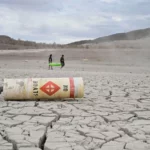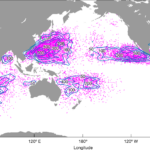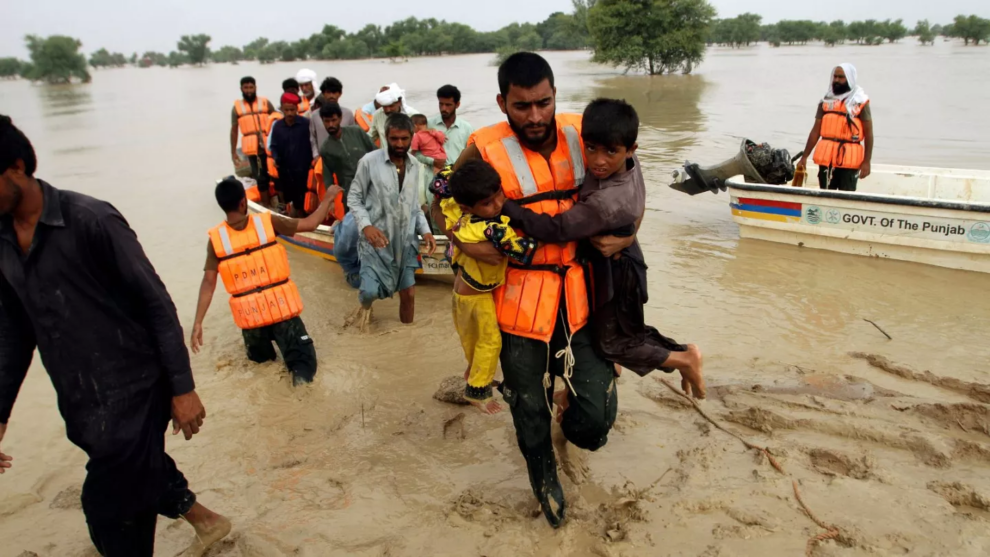Dozens of countries are meeting for the first time this week to discuss the details of a fund for climate victims. They decided to work together at COP27 last November.
A loss and damage fund was the biggest breakthrough agreement from the UN climate summit, held in Egypt. More than 30 years since the idea was first proposed, countries agreed to help vulnerable nations recover from climate-related disasters.
But the deal is an empty nest at present; countries still need to decide how the new funding stream will work exactly, and who the money will flow from and to.
What is the UN committee on loss and damage?
As per the Sharm El Sheikh Implementation Plan, a transitional committee of 24 members is convening from 27 to 29 March to make progress on this vital issue.
The UN committee meeting is taking place in the Egyptian desert city of Luxor, and is a key event on the road to COP28 in Dubai later this year.
“All eyes are on the transitional committee as it convenes in Luxor,” says COP27 president Sameh Shoukry.
“There are great expectations with regards to progress towards the operationalisation of the relevant fund and all the other elements that constitute the mandate of this committee.”
Who is at the transitional committee on loss and damage?
Only a select number of people are present at the transitional committee. It brings together 24 members from Parties to the UNFCCC and the Paris Agreement, carefully grouped together based on wealth and geography.
In total, 10 members from developed countries, and 14 from developing countries have a seat at the table. With so few spots up for grabs, regions have had to compromise on who will represent them.
The Asia-Pacific group – which has three seats – only reached an agreement two weeks ago, after reports of some sharp elbows between countries.
“Everybody wants to be part of the discussion,” said Mohamed Nasr, Egypt’s lead negotiator and committee member for one of Africa’s three slots, dedicated to the COP27 presidency.
As there are two more transitional committee meetings scheduled before COP28, the Asia-Pacific bloc (and others) have compromised by dividing the three meetings between six different countries.
India, the Philippines and Saudi Arabia will share one seat, while China, South Korea and Pakistan will share the other. The third seat is reserved for a representative of the incoming COP28 presidency: Hana AlHashimi from the UAE.
The US, the UK, France, Norway, Finland, Australia, Canada and Japan occupy the developed country seats, with Denmark and the Netherlands, and Ireland and Germany sharing the remaining two seats for the wealthier, industralised groups.
As part of the transition between COPs, Nasr has handed over control of the committee to newly elected co-chairs Outi Honkatukia (Finland) and Richard Sherman (South Africa).
What form could a loss and damage fund take?

The committee is tasked with proposing how the fund should be set up and managed, presenting its findings to all countries at COP28 in December for a unified decision.
“This is a huge responsibility and one that cannot be taken lightly,” Brandon Wu, head of policy and campaigns at ActionAid USA said ahead of the meeting.
“Defining how the new loss and damage fund will work in practice, including ways it will be governed, is of utmost importance. For far too long developed countries have failed to take responsibility for the overwhelming role they have played in causing the climate crisis.”
The transitional committee will be looking at identifying and expanding sources of funding, and considering how a new fund or finance facility will work alongside existing arrangements.
As the UN Environment Programme states, it is important that the new fund tackles the gaps that current climate finance institutions such as the Green Climate Fund and Adaptation Fund do not fill.
Campaigners argue that the loss and damage fund must be accountable to the most vulnerable, drawing on the experience of community-based organisations, and using financial instruments that are non-debt-inducing and grant-based.
It should be programmatic and long-term, rather than project-based, head of global political strategy at Climate Action Network (CAN) International Harjeet Singh told the committee today.
What are the dividing lines on loss and damage?
With question marks over practically all parts of the new arrangement, tensions are running high. To help smooth conversations and “allow for an informal exchange of views to support the Committee,” the Egyptian presidency hosted members on a two-day retreat over the weekend.
Sticking points from COP27 are likely to re-emerge, such as the EU’s argument that relatively wealthy, high-emitting countries like China should also pay into the fund. UN climate negotiations rest on a 1992 categorisation of developed and developing countries; though China does not bear nearly as much historical responsibility as the US (for example), some developed countries argue that times have moved on.
Asked at a recent briefing whether the contributor base for the fund should be broadened, Nasr responded that “the main thing for now is to see that there are funding arrangements that can deliver.”
Getting buy-in from everybody should be the first step, he said. “Our focus should be mainly to deliver to those communities who are impacted. In Pakistan, people are still in the streets. And if you go to South Africa, Latin America, small islands, lives have been devastated.
“Should we fix this discussion on who’s going to pay, or should we respond to them as soon as possible, and continue our process? I think this is the way we see it; we should respond as soon as possible.”
Writing his suggestions in Climate Home News, veteran COP campaigner and director of the International Centre for Climate Change and Development (ICCCAD) Saleemul Huq also warned committee members “not [to] make ‘perfect’ the enemy of ‘good enough’!”
“An imperfect fund that starts to operate quickly is better than waiting years for the first dollar to be delivered,” he writes, advising them to operate in ‘reality time’ rather than ‘UNFCCC time’.
We must now act swiftly to establish a loss and damage fund, to give vulnerable countries not only a lifeline, but also access to justice.
Harjeet Singh
Head of global political strategy, CAN International
But those with the most at stake will be anxious to set the fund up on solid foundations, and defend it from being watered down.
“We are concerned these countries may try to move attention away from the fund and discuss other options for funding arrangements, in order to dodge their responsibility to contribute hard cash to poorer countries,” adds Wu. “They cannot be allowed to employ any distraction tactics during these meetings. It’s vital this fund delivers for those living at the forefront of the climate crisis.”
Other important questions – such as what role ‘innovative sources’ like taxing fossil fuel companies might play – must be secondary to setting up the framework for the fund, he says.
Addressing committee members this afternoon, Singh described the loss and damage fund as “not only a lifeline, but also access to justice.”
He implored countries to start making up for the “huge trust deficit” that has emerged over the decades.
“The world is looking to you with the expectation that your actions will change lives, ensure safe futures and regain their trust by operationalising the fund at COP28, and that meets their needs with the required speed, scale and adequacy.”
Source : Euro News











Add Comment